officially the Kingdom of Thailand, formerly known as “Siam” is a country at the centre of the Indochina peninsula in Southeast Asia. It is bordered to the north by Burma and Laos, to the east by Laos and Cambodia, to the south by the Gulf of Thailand and Malaysia, and to the west by the Andaman Sea and the southern extremity of Burma. Its maritime boundaries include Vietnam in the Gulf of Thailand to the southeast, and Indonesia and India on the Andaman Sea to the southwest.
Most of Thailand has a "tropical wet and dry or savanna climate" type The south and the eastern tip of the east have a tropical monsoon climate.
Countrywide, temperatures normally range from an average annual high of 38 °C (100.4 °F) to a low of 19 °C (66.2 °F). During the dry season, the temperature rises dramatically in the second half of March, spiking to well over 40 °C (104 °F) in some areas by mid-April when the sun passes its zenith.
Southwest monsoons that arrive between May and July (except in the south) signal the advent of the rainy season (ruedu fon). This lasts into October and the cloud covering reduces the temperature again, with the high humidity experienced as 'hot and sticky'. November and December mark the onset of the dry season and night temperatures on high ground can occasionally drop to a light frost. Temperatures begin to climb again in January.
The official language of Thailand is Thai, a Tai–Kadai language closely related to Lao, Shan in Burma, and numerous smaller languages spoken in an arc from Hainan and Yunnan south to the Chinese border. It is the principal language of education and government and spoken throughout the country. The standard is based on the dialect of the central Thai people, and it is written in the Thai alphabet, an abugida script that evolved from the Khmer script. Several other dialects exist, and coincide with the regional designations. Southern Thai is spoken in the southern provinces, and Northern Thai is spoken in the provinces that were formerly part of the independent kingdom of Lannathai.
Thailand is also host to several other minority languages, the largest of which is the Lao dialect of Isan spoken in the northeastern provinces. Although sometimes considered a Thai dialect, it is a Lao dialect, and the region in where it is traditionally spoken was historically part of the Lao kingdom of Lan Xang. In the far south, Yawi, a dialect of Malay, is the primary language of the Malay Muslims. Varieties of Chinese are also spoken by the large Chinese population, with Teochew being best represented.
Thailand ended 2013 with a population of 68,229,000 people, which represents an increasea of 1,443,999 people compared to 2012.
Thailand is no. 19 among the 184 countries which published this information in DatosMacro.com.
The female population is greater, with 34,193,339 women, representing 50.11% of the total, compared to 32,817,163 or 48.09% men.
Thailand, with 133 people per square km and it was in position 131th in our ranking of density population in 2013.
Today for various reasons Thailand is divided into 6 regions, or more precisely 6 regional groups of Thai provinces. The regions are: Central Thailand, including the Thai capital of Bangkok, Eastern Thailand, Northern Thailand, Northeast (Isan), Southern Thailand and Western Thailand.
1-Metro systems:
Bangkok is the only city in Thailand with a metro system.
2-Bus service:
Buses are a major method of transportation for people, freight, and small parcels, and are the most popular means of long distance travel. Tour and VIP class long-distance buses tend to be luxurious, while city- and other-class buses are often very colorful with paint schemes and advertising.
There are fundamentally two types of long-distance buses in Thailand:
Those run by The Transport Company, Ltd., (TCL), and the state-owned bus company. Known to Thais by the initials บขส (pronounced baw-kaw-saw), this 80-year-old company was formed by the government to ensure that citizens in even the most far-flung localities had access to the capital city, Bangkok. TCL buses are easily identified by the large golden coat of arms appliquéd to each side of the bus.
Those operated by private bus companies. These are too numerous to list and offer hundreds of routes in various service categories (express, VIP, local, air conditioned, etc.)
Local buses and Bangkok city buses come in various sizes, types, and prices, from half size, full size, double length, open window, fan, and air conditioned.
3-Alternative transport:
Includes tuk-tuk, taxi, van (minibus), motorbike taxi, songthaew, boats (in canals and rivers).
4-Taxi:
Bangkok has the most formal system of metered taxis. In other cities, a taxi can be a private vehicle with negotiable rates and there are a variety of shared taxis in which the fare is split among a group of passengers.
5-Ferry:
Ferry service between hundreds of islands and the mainland is available, as well as across navigable rivers, such as Chao Phraya and Mae Khong (Mekong). There are a number of international ferries.
.
Thailand's prevalent religion is Theravada Buddhism, which is an integral part of Thai identity and culture. Active participation in Buddhism is among the highest in the world. According to the 2000 census, 94.6% of the country's population self-identified as Buddhists of the Theravada tradition. Muslims is the second largest religious group in Thailand, comprising 4.6% of the population.
Islam is concentrated mostly in the country's southernmost provinces: Pattani, Yala, Satun, Narathiwat, and part of Songkhla Chumphon, which are predominantly Malay, most of whom are Sunni Muslims. Christians represent 0.7% of the population, with the remaining population consisting of Sikhs and Hindus, who live mostly in the country's cities. There is also a small but historically significant Jewish community in Thailand dating back to the 17th century.
Thai cuisine blends five fundamental tastes: sweet, spicy, sour, bitter, and salty. Some common ingredients used in Thai cuisine include garlic, chillies, lime juice, lemon grass, and fish sauce. The staple food in Thailand is rice, particularly jasmine variety rice (also known as "hom mali" rice) which is included at almost every meal. Thailand was long the world's largest exporter of rice, and Thais domestically consume over 100 kg of milled rice per person per year.
1. Tom Yam Goong:
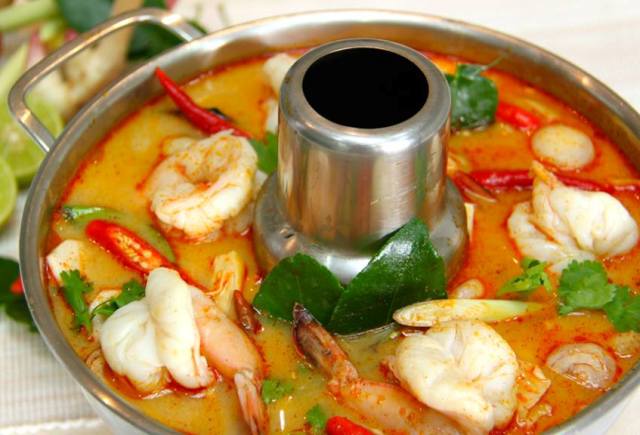
This is the national aroma of Thailand, thanks to the generous use of fragrant herbs. Lemongrass, lime leaves, galangal, and shallots provide the memorable smells, with chilis and fish sauce providing the kick. Substance comes in the form of jumbo shrimp (goong) and mushrooms. The flavor is a unique combination of spicy hot and sour and makes for
an ideal start to a meal, or - when paired with rice - a worthy main dish.
2. Pad Thai:
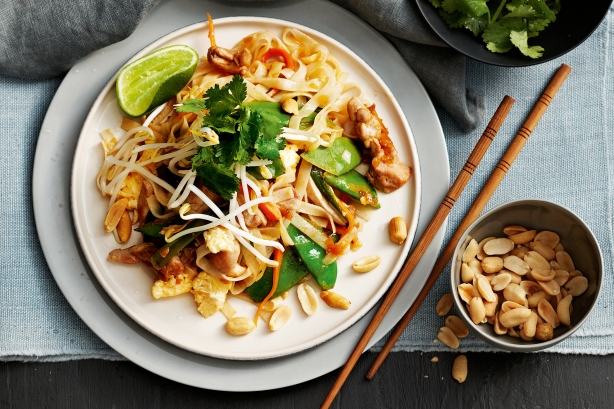
Thailand's calling card to the rest of the culinary world, pad Thai doesn't need an introduction. There are an infinite number of variations on this timeless tradition,
but usually noodles are dressed up with tofu, bean sprouts, onion, and the brilliant final touch: peanuts ground to near dust. Pad Thai is a diner-participation meal; you put on the finishing touches of fish sauce, sugar, chili powder, and crushed peanuts to suit your taste.
3. Kuay Tiew (Noodle Soup):
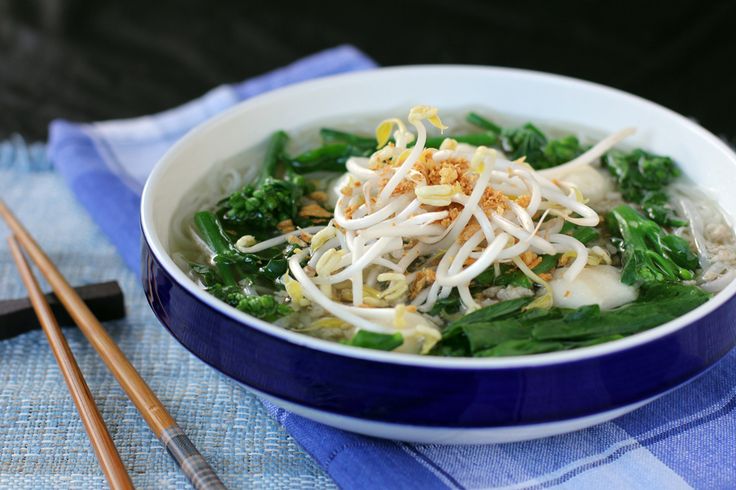
Brush up on your chopstick skills and get your slurping muscles ready, noodle soup is a quick-and-easy staple of the Thai eating experience. Variations in ingredients mean ten different vendors could serve it ten different ways ' making it nearly deserving of its own top ten lists. Noodles ' usually thin, occasionally broad ' are served up in a broth with just about any edible meat: pork, chicken, beef, duck, and seafood being the most popular. One sample and you may not stop until you've tried them all.
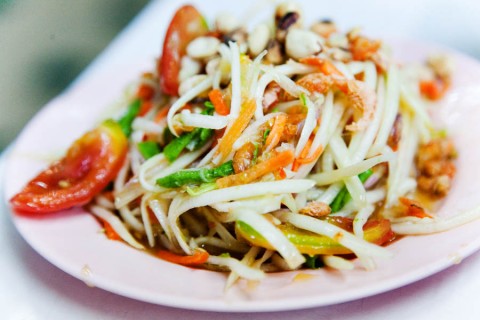 4-Som Tam:
4-Som Tam:
Som tam ' spicy papaya salad ' comes from northeast Thailand, but it's reached near-cult status throughout the rest of the country. Slight regional differences in ingredients means placement on the sweet-or-sour scale may vary greatly between restaurants. Common to all recipes is shredded green papaya and a healthy dose of heat. Barbeque chicken and lumps of sticky rice are the perfect companions.
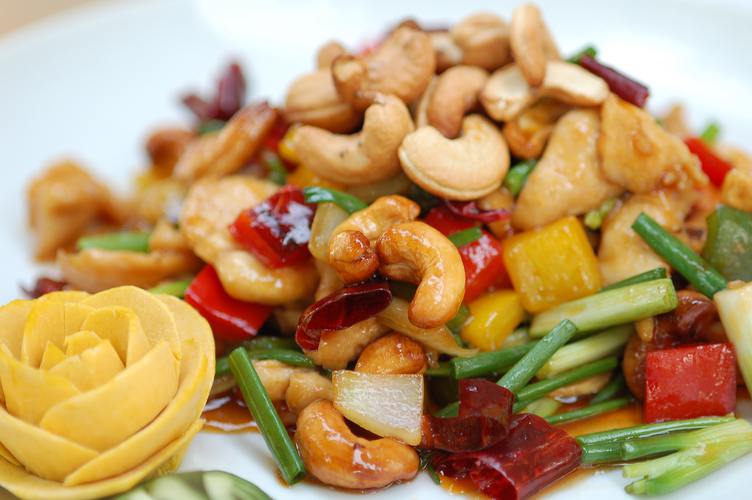 5-Gai Med Ma Moung (Chicken Cashew Nuts):
5-Gai Med Ma Moung (Chicken Cashew Nuts):
Roasted cashew nuts. Sweet soy sauce. Honey. Garlic. And, of course, chilis ' it would be Thai food without a little enjoyable pain. Three cheers for the clever soul that figured out nuts and chicken were a good mix. A dish this popular must be more than a little good. Phuket raises the standard with a vast supply of some of the world's best cashew nuts, and they're grown locally.
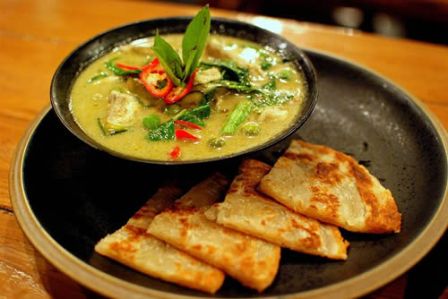 6-Geng Kheaw Wan Gai (Green Curry Chicken):
6-Geng Kheaw Wan Gai (Green Curry Chicken):
So what gives green curry its colour? Green curry paste. Sorry, not an exciting answer, but it is an exciting dish. Of all the curries, and there’s plenty of them, the one that’s the colour of American money is among the spiciest. It’s also the least like Indian curry; Thailand has
a way of making borrowed food distinctively Thai. The proof is in the coconut milk.
7- Tom Kha Gai:
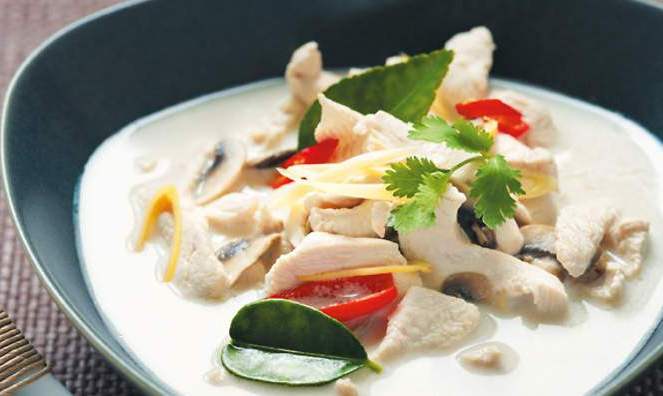 Possibly the world's most refreshing soup, tom kaa gai (boiled galangal chicken) combines coconut milk with lemongrass, galangal ' ginger's Asian sister ' and chicken. It's a sweet, tame twist on tom yam goong. On a table filled with delectable Thai dishes, tom kaa gai stands out; your spoon will return to this bowl time and again.
Possibly the world's most refreshing soup, tom kaa gai (boiled galangal chicken) combines coconut milk with lemongrass, galangal ' ginger's Asian sister ' and chicken. It's a sweet, tame twist on tom yam goong. On a table filled with delectable Thai dishes, tom kaa gai stands out; your spoon will return to this bowl time and again.
8- Kao Phad (Fried Rice):
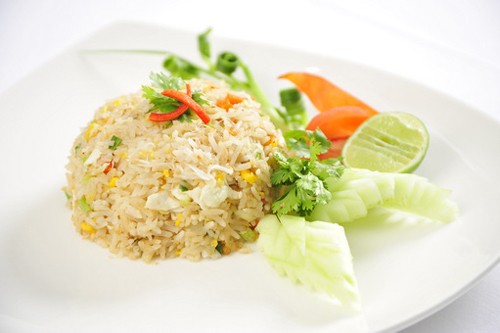 Ah, good old fried rice. On first sight, kao phad appears to be little more than a big heap of rice; you call that a meal? But try it. Augmented with your choice of meat ' shrimp and chicken being the most popular ' and egg, onion, cilantro, garlic, and tomotoes, this is rice with hidden secrets. Spice to taste with chili sauce and enjoy.
Ah, good old fried rice. On first sight, kao phad appears to be little more than a big heap of rice; you call that a meal? But try it. Augmented with your choice of meat ' shrimp and chicken being the most popular ' and egg, onion, cilantro, garlic, and tomotoes, this is rice with hidden secrets. Spice to taste with chili sauce and enjoy.
9- Massaman Curry:
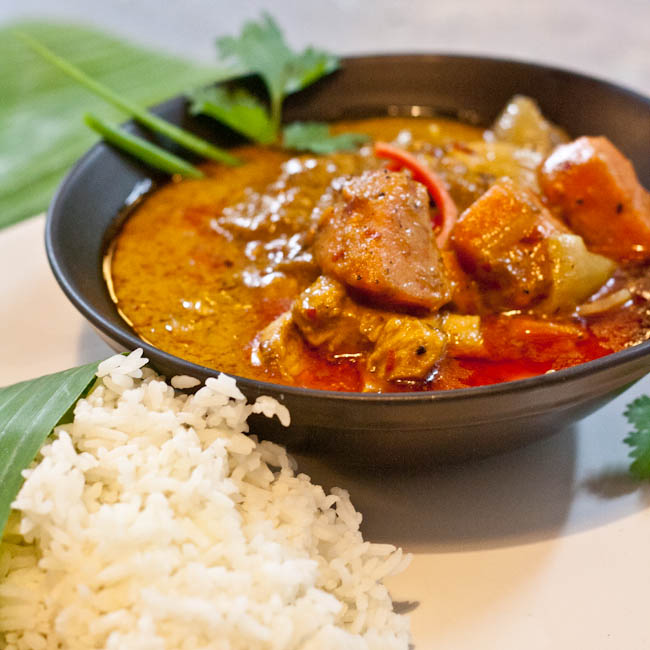 Massaman is the Thai word for "Muslim", which is the community to heartily thank for this concoction of coconut milk, potatoes, roasted peanuts, bay leaves, sugar, cinnamon, and tamarind sauce. The meat of choice is often beef or chicken, but because it's been embraced by the Buddhists, pork can also be found.
Massaman is the Thai word for "Muslim", which is the community to heartily thank for this concoction of coconut milk, potatoes, roasted peanuts, bay leaves, sugar, cinnamon, and tamarind sauce. The meat of choice is often beef or chicken, but because it's been embraced by the Buddhists, pork can also be found.
10- Khao man gai - chicken and rice:
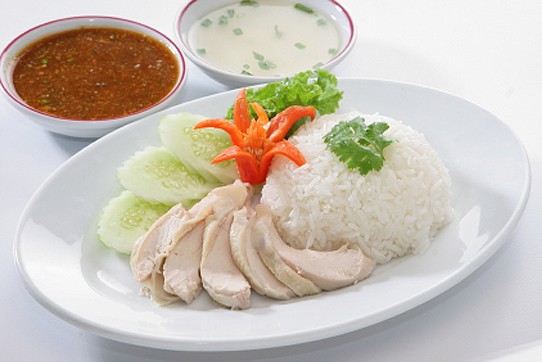 This is Thailand’s answer to British fish and chips – an ubiquitous meal served mostly during the daytime (while stocks last) at special khao man gai dedicated stalls and restaurants. The chicken is gently boiled until it is tender then the water is used in boiling the rice. This means that khao man gai – apart from being delicious – is high in cholesterol. Served with a chicken broth and delicious sweet and spicy sauces, it’s the perfect midday snack.
This is Thailand’s answer to British fish and chips – an ubiquitous meal served mostly during the daytime (while stocks last) at special khao man gai dedicated stalls and restaurants. The chicken is gently boiled until it is tender then the water is used in boiling the rice. This means that khao man gai – apart from being delicious – is high in cholesterol. Served with a chicken broth and delicious sweet and spicy sauces, it’s the perfect midday snack.
The hotel offers a snack bar/deli. A bar/lounge is on site where guests can unwind with a drink. Guests can enjoy a complimentary breakfast. An Internet point is located on site and high-speed wireless Internet access is complimentary.